

Walking through the Forbidden City of Beijing has always been very high on my wishlist and getting to walk through this Chinese imperial palace while on our China Odyssey was a dream come true. The Forbidden City was the Chinese imperial palace from the Ming Dynasty to the end of the Qing Dynasty. For almost 500 years, it served as the home of emperors and their households, as well as the ceremonial and political center of Chinese government.
Built in 1406 to 1420, the complex consists of 980 buildings and covers 720,000 m2. So you need more than a day to be able to explore the whole palace and its surrounding gardens. We spent a whole day exploring the Palace and only saw the most important parts.
We entered the Forbidden City through the East Glorious Gate, walking through the Imperial palace and ending our adventure in the ImperialGarden at the North Gate.
As we entered the city we walked along the central gateway, a stone flagged path that forms the central axis of the Forbidden City and leads all the way from the Gate of China in the south to Jingshan in the north. Only the Emperor was allowed to walk or ride on the Imperial Way, except for the Empress on the occasion of her wedding, so I felt quite royal walking along this path.
Traditionally, the Forbidden City is divided into two parts. The Outer Court which was used for ceremonial purposes. The Inner Court or BackPalace which was the residence of the Emperor and his family, and was used for day-to-day affairs of state.
Entering from the Meridian Gate, we encountered a large square, pierced by the meandering Inner Golden Water River, which is crossed by five bridges.
Behind that is the Hall of Supreme Harmony Square. A three-tiered white marble terrace rises from this square. Three halls stand on top of this terrace, the focus of the palace complex.
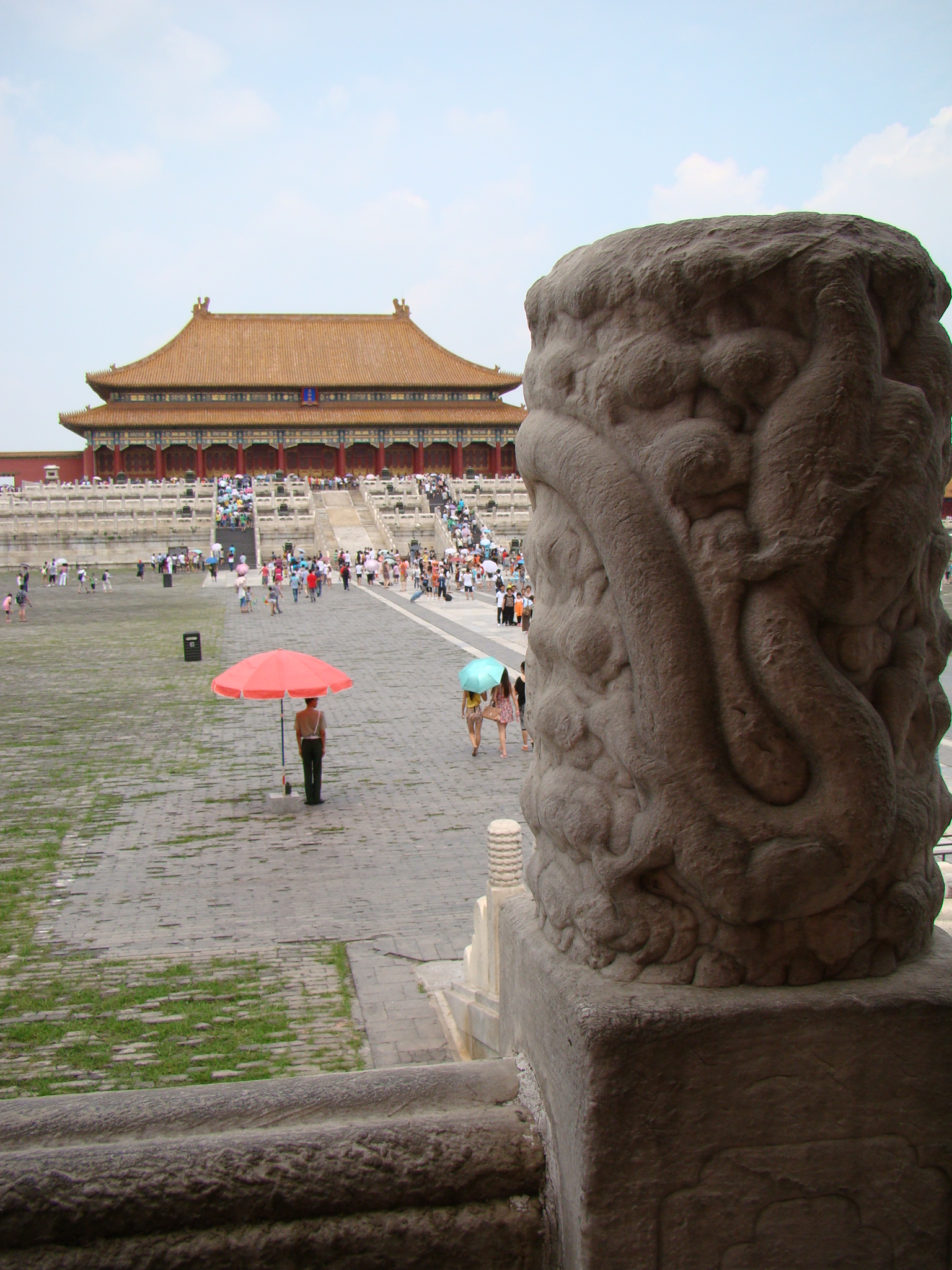

From the south, these are the Hall of Supreme Harmony , the Hall of Central Harmony , and the Hall of Preserving Harmony . The Hall of Supreme Harmony is the largest, and rises some 30 metres above the level of the surrounding square. It is the ceremonial centre of imperial power, and the largest surviving wooden structure in China. Set into the ceiling at the centre of the hall is an intricate caisson decorated with a coiled dragon, from the mouth of which issues a chandelier-like set of metal balls, called the “Xuanyuan Mirror”.


Yellow is the color of the Emperor. Thus almost all roofs in the Forbidden City bear yellow glazed tiles.

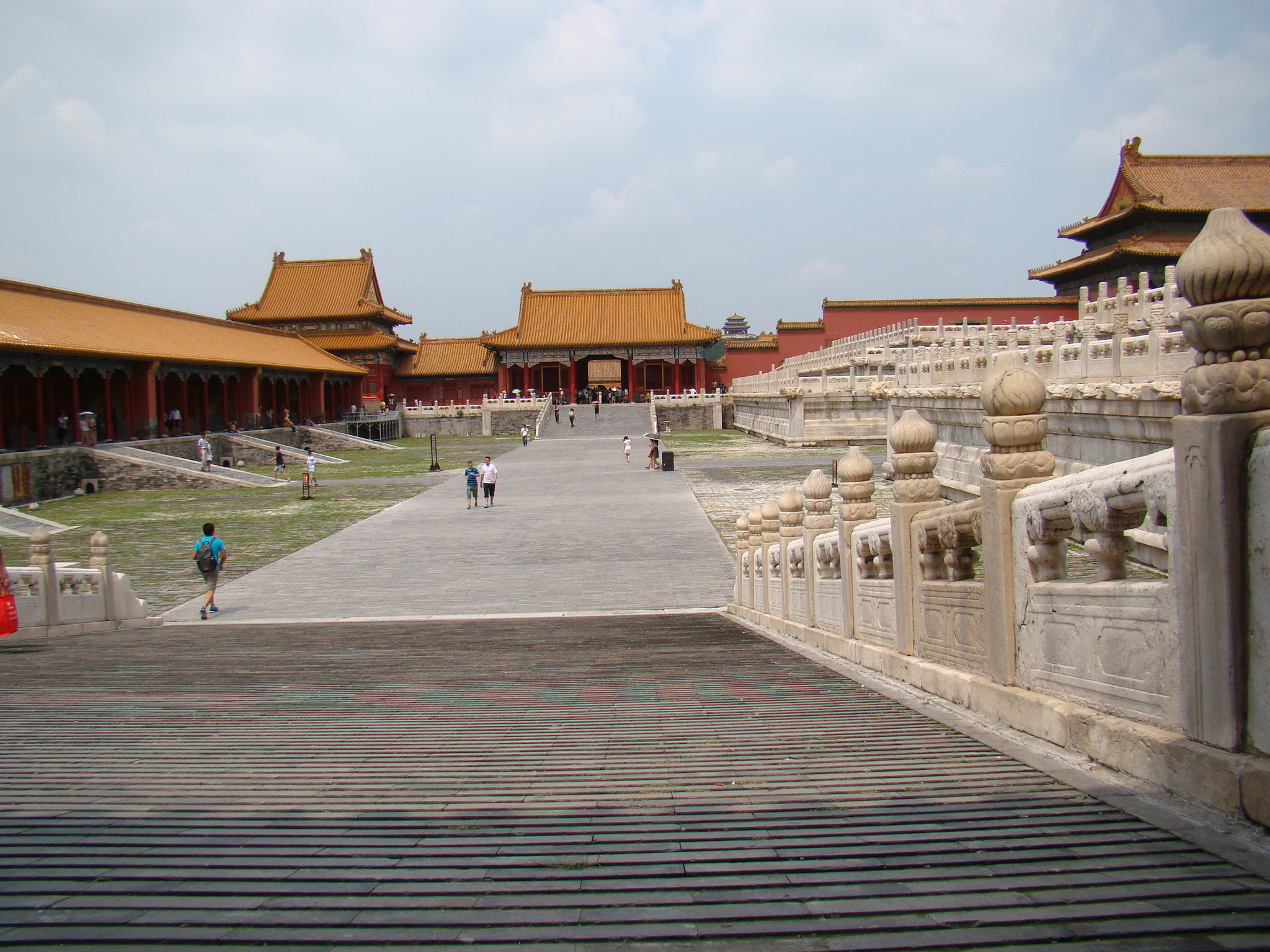

Behind it, the Hall of Preserving Harmony, was used for rehearsing ceremonies, and was also the site of the final stage of the Imperial examination. All three halls feature imperial thrones, the largest and most elaborate one being that in the Hall of Supreme Harmony.
At the centre of the ramps leading up to the terraces are ceremonial ramps, part of the Imperial Way, featuring elaborate and symbolic bas-relief carvings.


The Inner Court is separated from the Outer Court by an oblong courtyard and was the home of the Emperor and his family. In the Qing Dynasty, the Emperor lived and worked almost exclusively in the Inner Court, with the Outer Court used only for ceremonial purposes.





At the centre of the Inner Court is another set of three halls . From the south, these are the Palace of Heavenly Court, Hall of Union, and the Palace of Earthly Tranquility. Smaller than the Outer Court halls, the three halls of the Inner Court were the official residences of the Emperor and the Empress.


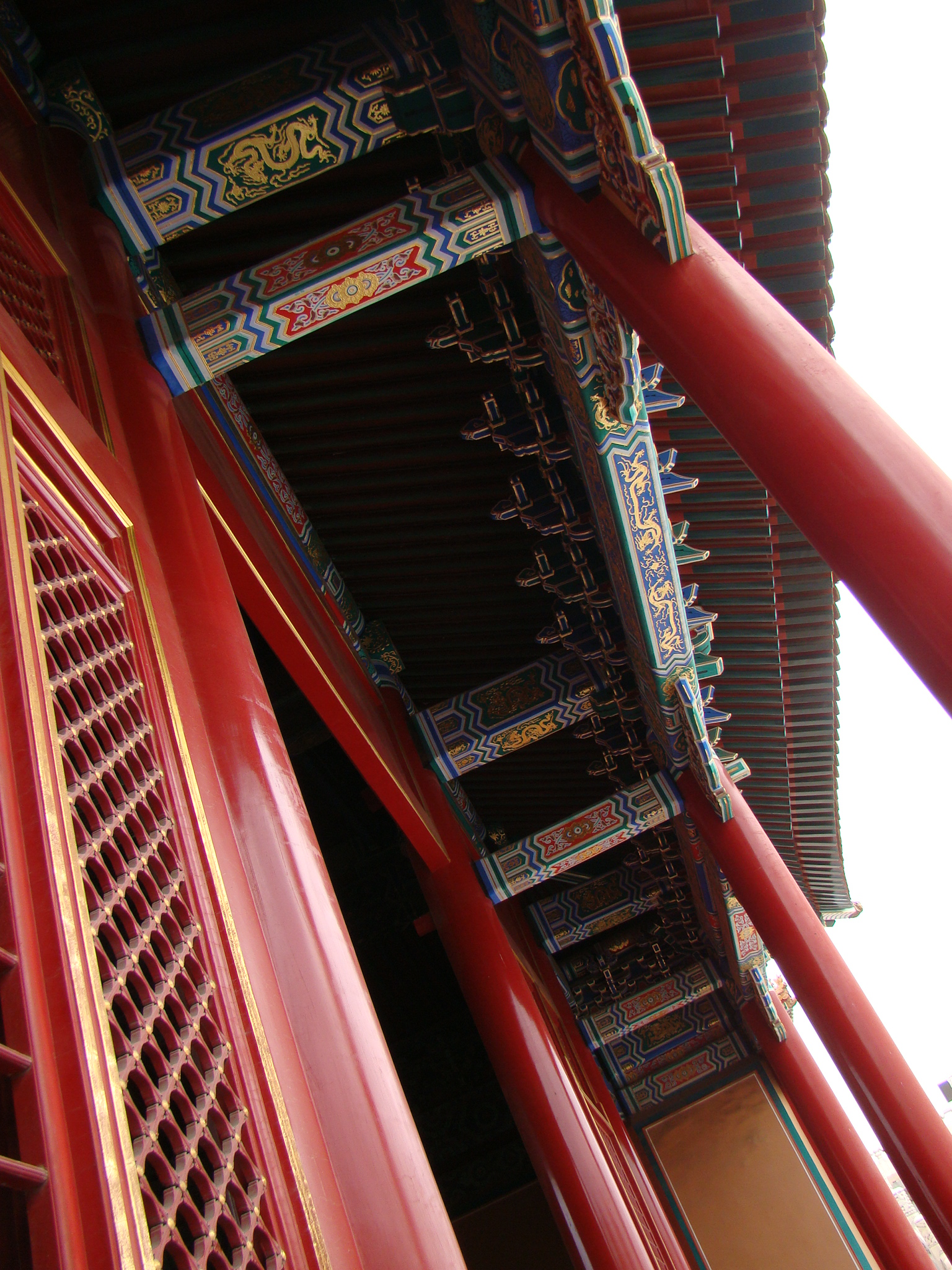
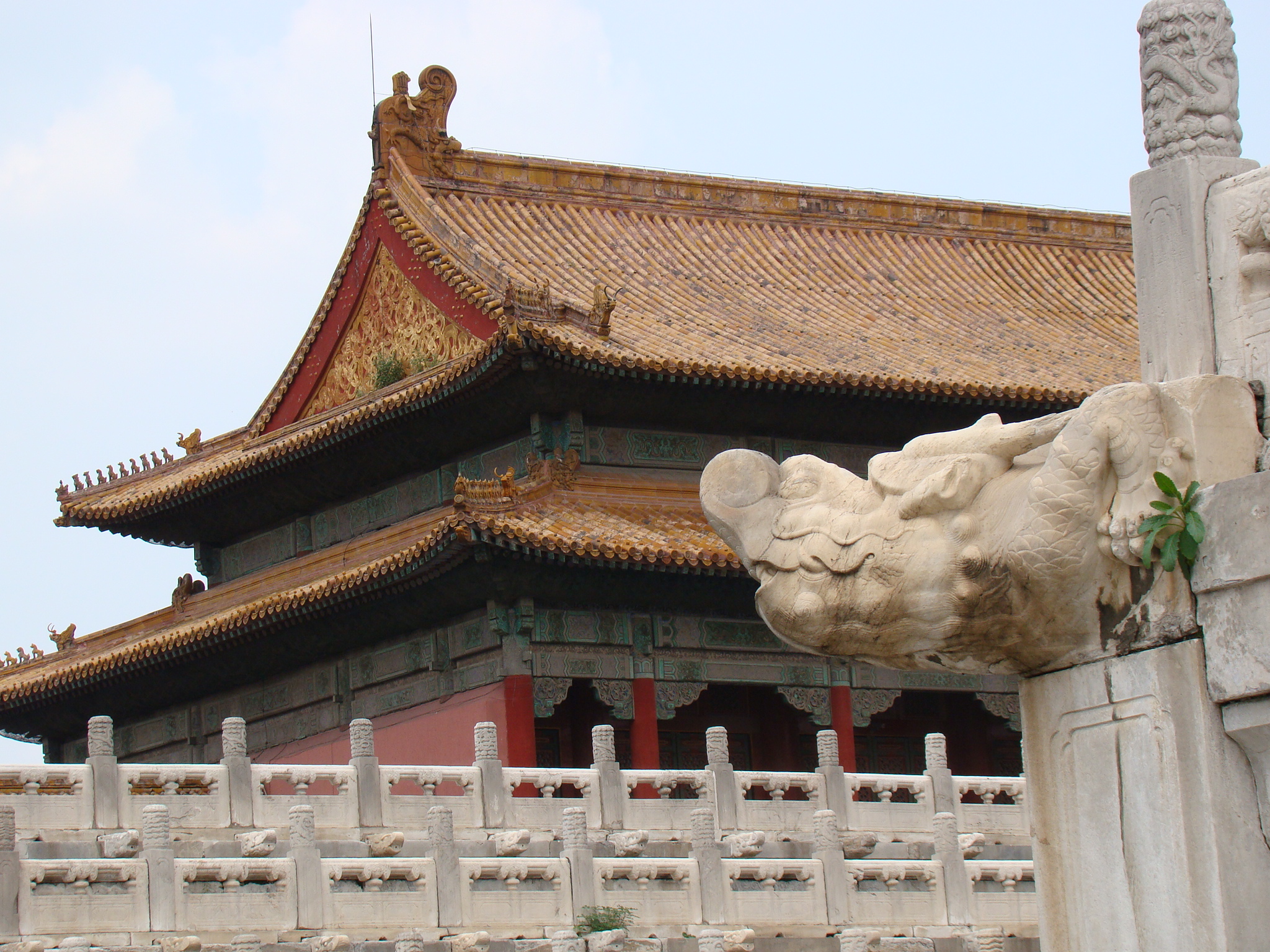
Behind these three halls lies the Imperial Garden. Relatively small, and compact in design, the garden nevertheless contains several elaborate landscaping features.


From 1420 to 1644, the Forbidden City was the seat of the Ming Dynasty. After being the home of 24 emperors – 14 of the Ming Dynasty and 10 of the Qing Dynasty – the Forbidden City ceased being the political centre of China in 1912 with the abdication of Puyi, the last Emperor of China. Under an agreement with the new Republic of China government, Puyi remained in the Inner Court, while the Outer Court was given over to public use, until he was evicted after a coup in 1924.


The Forbidden City was declared a World Heritage Site in 1987, and is listed by UNESCO as the largest collection of preserved ancient wooden structures in the world. I would definitely recommend a visit to this amazing palace!
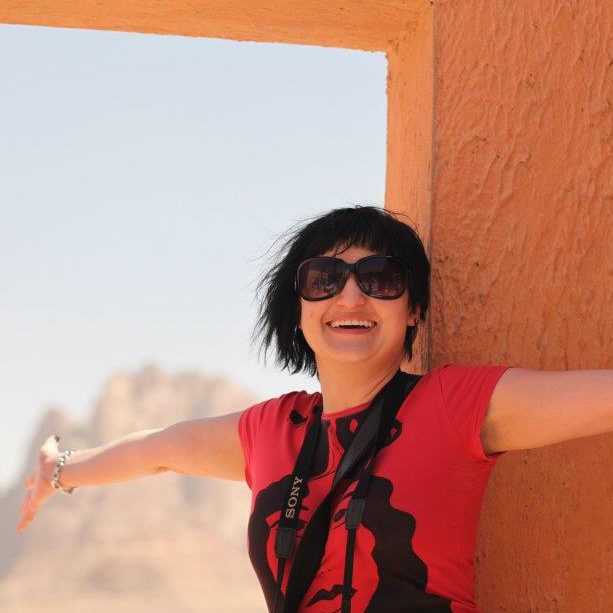







Wonderful pictures! And lots of fun, too. Thanks for sharing!
LikeLike
Thank you!! I had such an amazing day exploring this fabulous city with my mom.
LikeLike
Great photos! Thanks so much for sharing your adventure.
LikeLike
Thanks Terri! It was such a fabulous experience!!
LikeLike
You look really happy there with your red parasol :-). Thanks for giving us a glimpse of the Forbidden City. I love the colourful details.
LikeLike
Thanks a lot!! It was an amazing day but very hot so the red parasol ended up being quite a saviour!
LikeLike
Great pictures! Only I heard a different explanation about the lions in the palace. The one line with a lioncel under one foot is a lioness which represent the Empress, and you can find another one with a ball under the foot, that is a male lion,which stands for Emperor. Looks like you had a great fun, enjoy!
LikeLike
Thanks!! i might have mixed them up….but it was so much information to take in and so much detail to see…..it was just amazing!!
LikeLike
Yeah you’re right, I’v been to the Forbidden City for more than 5 times and each time I learn something new. BTW, I like the umbrella you got there, looks great with you:) Cheers !
LikeLike
Thanks for detailing the palace buildings! You got some great photos of the Forbidding City!
LikeLike
Thanks Amy!! It was such an amazing adventure!
LikeLike
You’re spirit and personality is bringing life to those old buildings!!!
LikeLike
Thanks for that beautiful compliment Juan! I was so excited that day and so happy if the photos can relay some of my excitement.
LikeLike
Fabulous pictures! Love the details in your pictures of the rooflines, ceremonial ramps, etc. Thanks for keeping my China trip alive through your blog! http://ohtheplaceswesee.com
LikeLike
Thanks Rusha!! It was such an amazing place to explore and so much detail to try and capture on film that I am sure I could spend another day or two walking around and just taking photos.
LikeLike
I hope to follow in your footsteps and visit the Forbidden City for myself one day!
LikeLike
I do hope you get to visit it!! It is an amazing place and so vast that if you have time, spend 2 days going through the place to be able to see and apreciate everything.
LikeLike
Wow!
LikeLike
Yes, it is such an amazing place!
LikeLike
I must admit I envy many of the places you’ve been and seen but keep reporting because it just reminds me of how much of this world I’ve still to see 😉 xxxx
LikeLike
I absolutely loved the Forbidden City when I went – every you look is another ornate carving, or statue. One of my favourite places, but it’s a shame it hasn’t seen as much preservation as other sites.
LikeLike
I agree, it is an amazing place!! It is filled with so much detail that I would love to visit it again….as I am sure I didnt get to notice even half of what was there!
LikeLike
What an interesting place to visit. The artwork on the roofs remind me of the Buddhist Temple in South Africa. Have you been there?
LikeLike
Wow, never been there before but do plan on doing a lot of travelling in South Africa from next year as I am moving back there end of November this year. So excited about getting to play tourist in South Africa!!
LikeLike
I posted some pictures on my blog ( http://collinesblog.wordpress.com/2013/01/27/an-african-buddhist-temple/ )
It is definitely a place to investigate if you are travelling along the N4 to Witbank.
LikeLike
Great post! Fab photos too. It helped us relive our visit 🙂 – The place is just so massive! And the attention to detail is unreal!
LikeLike
Thank you! I agree it is huge and by the end you are so overwhelmed by the detail and vastness of the place that cant take in any more info or sights! It was amazing!!
LikeLike
Wow great info and pics!
LikeLike
Thank you! Was such an mazing place to explore that I couldnt wait to share it with everyone!
LikeLike
Great post Janaline, looks like you are having a lot of fun 🙂
LikeLike
Thanks David! It was a fabulous experience and definitely had a lot of fun!
LikeLike